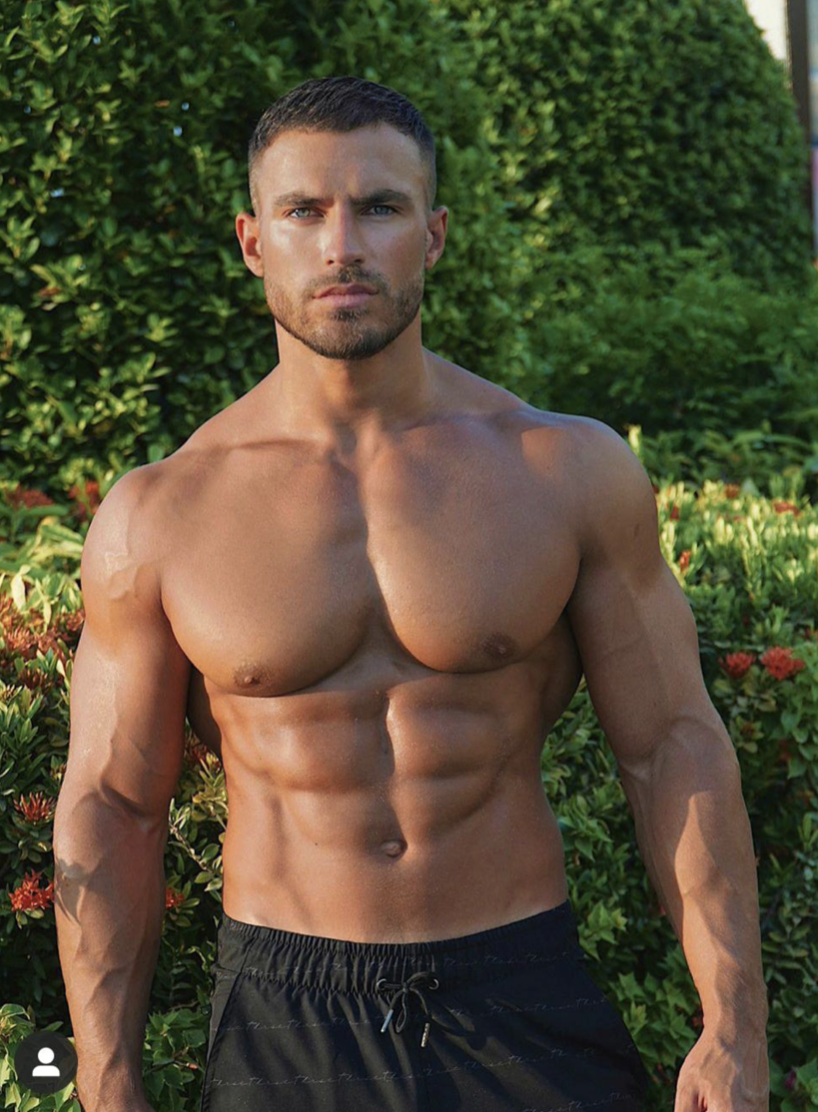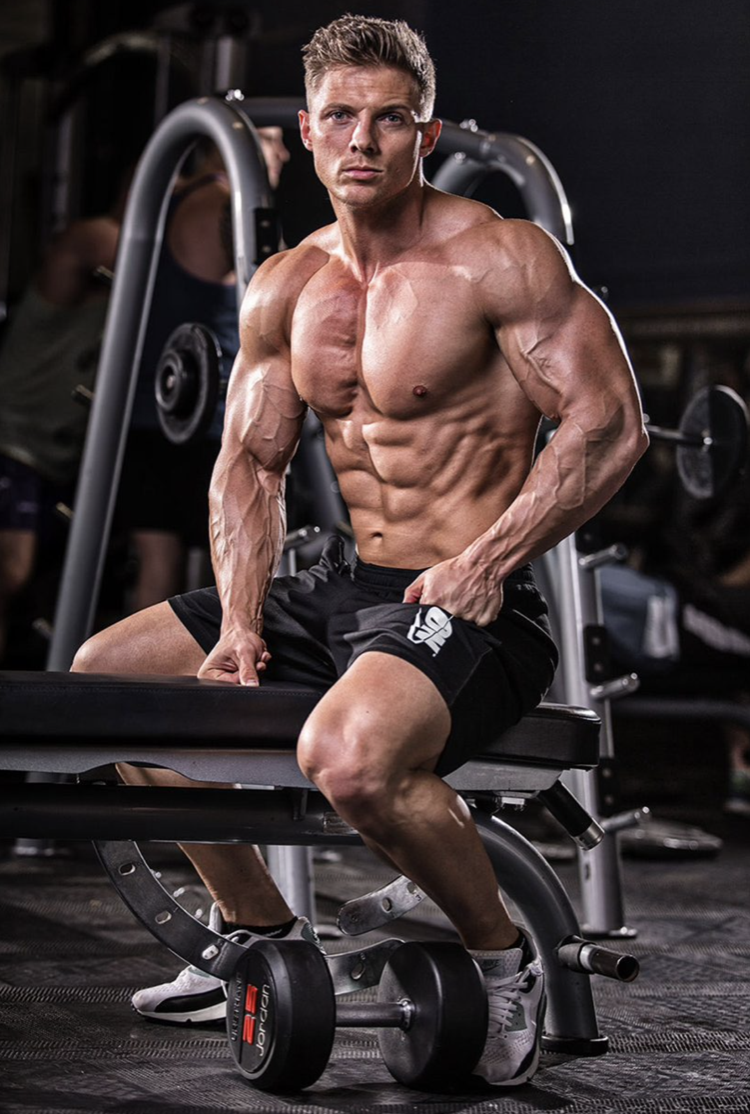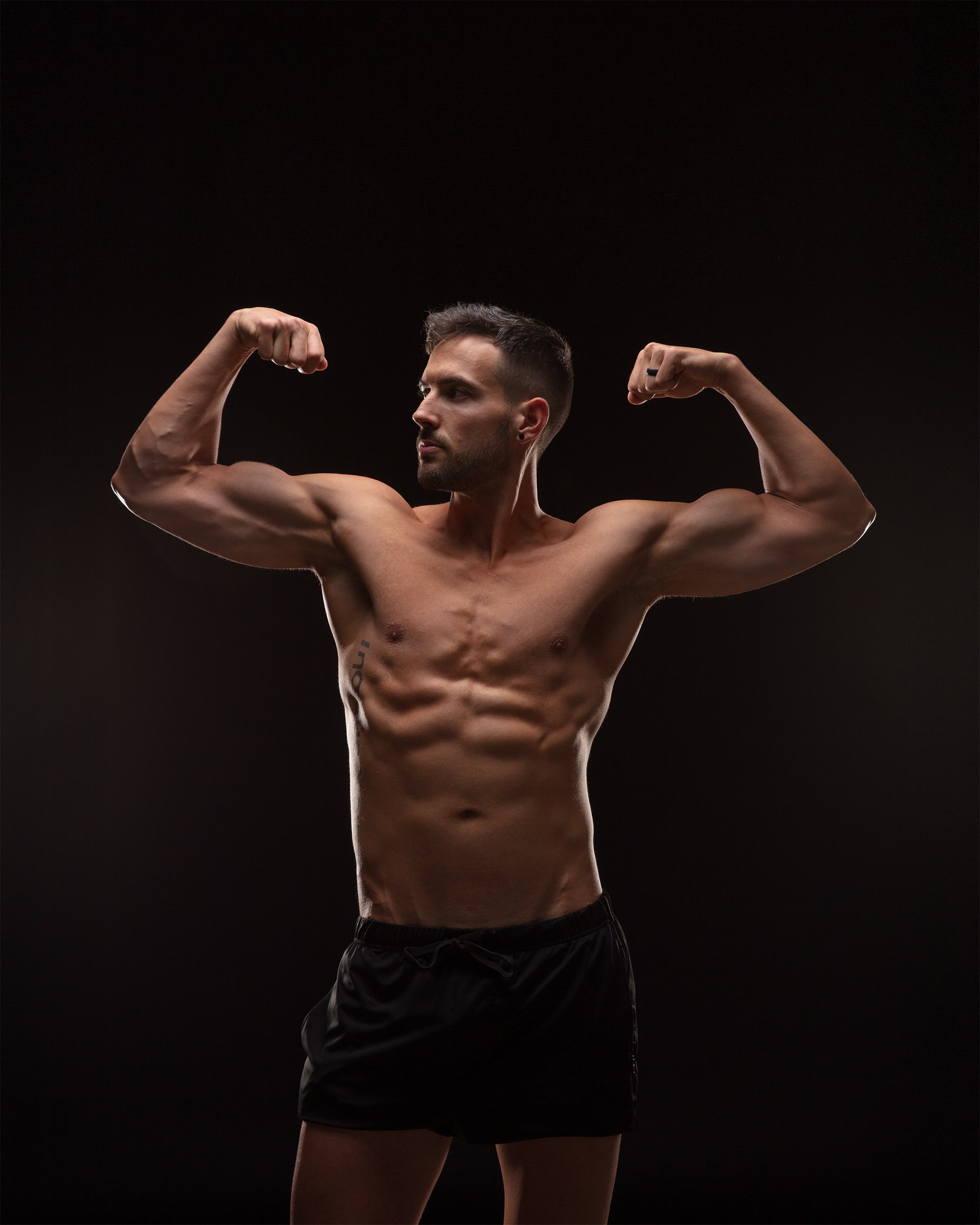To be honest with you, I never thought I would be writing this article.
For those of you who don't know, I was one of those classic “CrossFit-haters” before I woke up to the fitness, mobility, strength, and other positive health benefits of the CrossFit methodology, which means I would have given bodybuilding the award for “best training methodology for staying lean” over CrossFit in a heartbeat.
But after having dabbled in CrossFit for awhile now myself, I’m not so sure.
So it's time to discuss the battle of the training styles: Bodybuilding vs. CrossFit.
Which is better for getting that lean, hard-body look?
In this article, I am going to:
Tell you what it means to train like a bodybuilder.
Tell you what it means to train like a CrossFitter.
Consider the general benefits of bodybuilding and CrossFit respectively.
Tell you which one I think is “best” for living a lean, muscular life.
Reveal how I personally train and eat based on my own goals and values.
You're busy, so let's define some terms and then jump right into it.
What does it mean to train like a bodybuilder?
Just know that the term "bodybuilding" here just means training with mostly straight sets of 6-20 reps with the primary goal of building muscle for aesthetic purposes above all else.
If you’re familiar with the term hypertrophy, you know that this is the name of the game for every serious bodybuilder - size and shreds at all costs.
But first, I want to make it clear that I don’t think you have to identify as a bodybuilder to train like a bodybuilder, and you certainly don’t have to be a competitive bodybuilder to train like a bodybuilder.
I wouldn't even have identified as a bodybuilder when I trained exclusively for hypertrophy from May 2019 through August 2021 because it simply wasn’t something I embraced as a part of my identity.
So when you see bodybuilding language being used in this article, remember that it just refers to that style of training, which is honestly what most normal people seem to do when they go to the gym to lift weights.
For example, they hit three sets of barbell bench press and then three sets of machine incline bench. Then they move on to a shoulder press and a few tricep movements to finish off their session with a skin-splitting pump and a quick flex in the mirror on their way back to the locker room.
Does this sound familiar?
In other words, most bodybuilders train with a particular training split in mind, which means they target specific muscle groups on specific days of the week (in most cases).
This is one of the main differences between bodybuilding and CrossFit.
Some of the most common training splits are:
Push, Pull, Legs, Push, Pull, Legs, Rest
Legs, Push, Pull, Rest, Legs, Rest, Arms
Upper, Lower, Rest, Upper, Lower, Rest, Rest
Full Body, Full Body, Rest, Full Body, Full Body, Rest, Rest
Mike Thurston, bodybuilder
To represent the bodybuilding side of the “argument” in this article, I’ve chosen to feature Mike Thurston, who has been one of my favorite fitness influencers for years.
And although Mike Thurston has often been accused of using performance enhancing drugs, he claims to be a drug-free bodybuilder (and I choose to believe him despite the rising intensity of the “natty witch hunt” movement).
For that reason, I think he's a great example of just about "as good as it can get" when it comes to training purely for physique outcomes.
So maybe consider his build as you continue reading about the bodybuilding side of things.
What does it mean to train like a CrossFitter?
CrossFit, for the purposes of this conversation, probably means that you actually go to a CrossFit gym and do their daily workouts usually called WODs or metcons.
You could maybe loop a more general circuit-like training style into this, but I'd rather not. It's just not the same, and I think we should keep CrossFit distinct from other training systems that might seem similar like Orangetheory or F45.
So for the purposes of this article, let’s assume that training like a serious CrossFitter is the dedicated equivalent of training like a serious bodybuilder.
For anyone who is unfamiliar with CrossFit, I think CrossFit is unique from bodybuilding in two distinct ways:
Noah Ohlsen, CrossFitter
True fitness is the goal of CrossFit - not aesthetics. And what’s important to remember here is that fitness refers to one’s ability to perform as much work as possible as efficiently as possible. What I mean here is that it’s not just about looking fit, which is a huge misconception in the fitness industry. While most people might agree that bodybuilders look fit, the truth is that most of them would struggle to post a respectable mile run time or even sprint 100 meters without straining a hamstring. And this isn’t meant to be an unfair dig at bodybuilders. Running in any capacity isn’t a primary component of what it means to be a bodybuilder.
CrossFitters don’t have training splits. In fact, one of the fundamental principles of CrossFit is known as The Hopper Model, which states that all-around fitness can be tested by pulling random fitness activities out of a bingo-like machine. For example, if you had 10 athletes looking to compete for the title of fittest of them all, you could pull out 10 random bingo balls with workouts on them and see who had the most impressive average performance. These workouts, however, would encompass a wide range of physical tasks: a max deadlift, a mile run, a couplet of pull-ups and overhead barbell presses for time, etc. The winner, in this case, would be the athlete who could perform the greatest variety of fitness exercises as well as possible. Because of this, CrossFit programming is about training in a way that best prepares you for the unknown. In other words, you won’t see CrossFitters doing bodybuilding splits. Instead, most of their training combines physical tasks in the categories of strength, gymnastics, and aerobic or anaerobic output (usually in the form of running, biking, rowing, or swimming).
Pictured above is Noah Ohlsen - one of my favorite physiques in the CrossFit space. Maybe think about him as you read about CrossFit and its perks.
He has finished in the top ten of the CrossFit Games seven times since 2014 and is frequently mentioned in conversations surrounding the “nastiest CrossFit physiques.”
Katrin Davidsdottir, CrossFitter
In both cases, I’ve tried to pick athletes who represent the cream of the crop for each of their respective sports.
And then obviously there are female representations as well, but I've decided not to go browsing the internet too intensely for women in minimal clothing, so you might have to do some of your own research for female physiques.
But for guidance you could Google "Gymshark chicks" "or “bikini competitors” for the bodybuildling/physique piece and then maybe Tia Toomey, Brook Wells, or Danielle Brandon for the CrossFit piece.
Pictured here is Katrin Davidsdottir, who won the CrossFit games in 2015 and 2016.
GENERAL BENEFITS OF BODYBUILDING
Keep in mind that the focus of this article is on which training modality is better for living a lean life - not necessarily which one is better all around.
But I've decided to start with a broader list of benefits of bodybuilding when compared to CrossFit to help people understand the bigger picture:
You can sculpt your physique more intentionally. So if aesthetics, symmetry, and shape are the most important things for you, this training methodology probably wins out. The most common example of this is probably women who want bigger glutes or men who want a bigger chest or bigger arms. CrossFit could certainly help with that, but a bodybuilding training style would be much more appropriate for a specific goal like bringing up a specific body part.
You're probably less likely to get injured, but it's no guarantee. I would just personally say it's less likely because the movements are generally less explosive, but some might disagree. You can hyperextend your knee on a leg press and fold in half like a piece of cheese just like you can tweak your back at CrossFit doing a heavy deadlift. And the only sense in which this injury piece has anything to do with getting and staying lean is that it’s hard to maintain an impressive physique as a wounded soldier.
Your workouts will be significantly easier in a "cardio sense" if you train like a bodybuilder. In other words, you never really get out of breath or feel like your lungs are going to explode. Some people really hate that feeling, so I think this is a notable perk for the bodybuilding camp.
You don't have to be athletic to train like a bodybuilder. While CrossFit might have you jumping onto boxes, running, and doing ring muscle-ups, bodybuilding is mostly about staying in fixed positions and focusing on a maximal mind-muscle connection.
GENERAL Benefits of CrossFit
On the other hand, I think the general benefits of CrossFit when compared to bodybuilding are:
Getting leaner and stronger happens fairly thoughtlessly if you show up consistently and continue to challenge yourself. That elimination of thought-fatigue is enormously important in my opinion. Most people already have enough to think about. Do you really want to have to design your own optimal diet and training program for glute hypertrophy?
You get to eat more food than bodybuilders and physique-minded people, which can have major lifestyle implications for people who don’t have the time or energy to be obsessing over food scales and precise macronutrient targets. Why? Bodybuilding doesn’t burn very many calories when compared to CrossFit workouts.
You actually get to take home a bit of fitness with your vanity. As amazing as some bodybuilders look externally, their aesthetic appearance is the extent of their “fitness.” CrossFit focuses on physical fitness above all else, which allows physique improvements to be byproduct of the greater goal. I think this has powerful psychological implications for people who want to be leaner and more muscular but are tired of being told to focus on “being in caloric deficit.”
Now that we’ve discussed the broader benefits of bodybuilding and CrossFit, which is better for living a lean, muscular life?
which one is better for a lean, muscular life?
Steve Cook, bodybuilder and fitness model
If your sole goal is to live lean life while looking like a Greek god or goddess, bodybuilding is going to better because it’s a more appropriate training methodology for your specific goal.
But a major caveat here is that it requires a level of discipline in the gym and the kitchen that most people are incapable of embracing.
For example, are you really going to make time to train 5-6 times per week for 60-90 minutes? Are you really going to hit 20 sets of quads taken within a few reps of mechanical failure? Are you really going to periodize seasons of cutting and bulking with specific macros and calories targets to accompany your goal?
Maybe! But maybe not.
For a lot of people, that level of self-responsibility and ownership just isn't realistic. They don't have the drive or the ambition or the time or the energy.
For that reason, I think CrossFit is better in terms of living that lean, muscular life that so many people seem to desire.
But let me be clear here about what I’m saying so you can understand the nuance.
In a vacuum, I think bodybuilding is better for overall aesthetics. But in real life, I think CrossFit is a better training system for longterm body recomposition.
In other words, if I had it my way, I would encourage everyone with a fat loss goal to start doing CrossFit over bodybuilding with the supervision of a weight loss specialist like me.
Why?
Firstly, bodybuilding just can't hold a candle to the time-effectiveness of CrossFit.
Christian Harris, CrossFitter
With CrossFit, you show up, get your bum kicked and lungs torched in less than an hour, and you go home having gotten a great stimulus for muscle growth and having burned a ton of calories in most cases.
This also leaves more grace for imperfect eating habits that bodybuilding folks don't get. In other words, you might be able to "get away with" training hard 4-5 times per week at your CrossFit gym while pretty much eating what you want within reason.
Does this mean you get to eat pizza and ice cream every night and be shredded?
No. It just means you can probably eat mostly whole foods to satiety and enjoy occasional (or even frequent treats) while staying respectably lean and in good health.
Secondly, most people are clueless when it comes to structuring a muscle-building workout (much less an entire cycle of evidence-based hypertrophy training) and lack the discipline required to execute that workout plan consistently.
In this case, the insurmountable benefits of CrossFit (in my opinion) are:
The reduced thought fatigue of knowing the workout is already written for you.
All you have to do is show up and give your best effort.
The accountability of a coach and other athletes in the class.
So, at the end of the day, I think it’s less of a question of which is “better” in an absolute sense and more of a question of which is “better” for you and your life.
Both bodybuilding and CrossFit can lead people toward leaner body compositions that boost health and confidence.
Ask yourself the following:
Which one do you enjoy more and which one can you see yourself doing sustainably?
If that’s bodybuilding, train like a bodybuilder.
If that’s CrossFit, train like a CrossFitter.
It just might be that simple.
What am I currently doing?
Right now, I'm blending both bodybuilding and CrossFit training concepts, but the majority of my training is centered around 5-6 CrossFit workouts per week.
Before or after those days, I do strength work primarily in the front squat, squat, and overhead press because improving my strength is a personal goal of mine.
Beyond that, I'm hitting extra bicep and side delt volume to help boost areas of my physique that I enjoy being more pronounced for aesthetic purposes.
In terms of how much I weigh, how lean I am, and how much I’m eating, I tend to hover around 190 pounds while eating about between 3,500-4,000 calories per day at somewhere between 12-15% body fat (according to the best body fat scan technology I have access to).
Why am I doing this?
This unique blend of training modalities is what most accurately reflects my personal values at this point in my life.
Personally, I value my overall physical fitness over my aesthetic appearance (which wasn’t always the case), and CrossFit is a much better lifestyle fit for me than bodybuilding.
It allows me to “eat in abundance” and “train like a freak,” which is personal motto of mine. I eat more than twice I used to eat as a bodybuilder, and I frequently enjoy 21-inch pizzas, toddler-sized burritos, Oreos, and red wine.
For me, nothing could be better, but I encourage everyone to make that choice for themselves.
Summary
Bodybuilding will probably be better for anyone whose goal of being lean is driven by aesthetics above all else. While CrossFit will help you lose fat and build muscle, bodybuilding principles (when applied properly) will yield better aesthetic outcomes over time in most cases.
CrossFit might be better for people who don’t have the time, energy, or ambition to write their own workouts and show up the gym consistently on their own accord.
CrossFit might also be better for anyone who isn’t interested in looking like a Greek sculpture. There are plenty of people who just want to lose some weight, gain some muscle, and look and feel more confident in their clothes.
I personally think CrossFit is a more practical approach for most people, but you can certainly live a lean, muscular life training like a bodybuilder as well.
I am currently doing 5-6 CrossFit workouts per week while supplementing with some strength and hypertrophy work because it reflects my goals and values.
As always, I really enjoyed writing this article, so if you found it helpful, do me a favor and send it to a friend.
Until next time,
-Andrew















